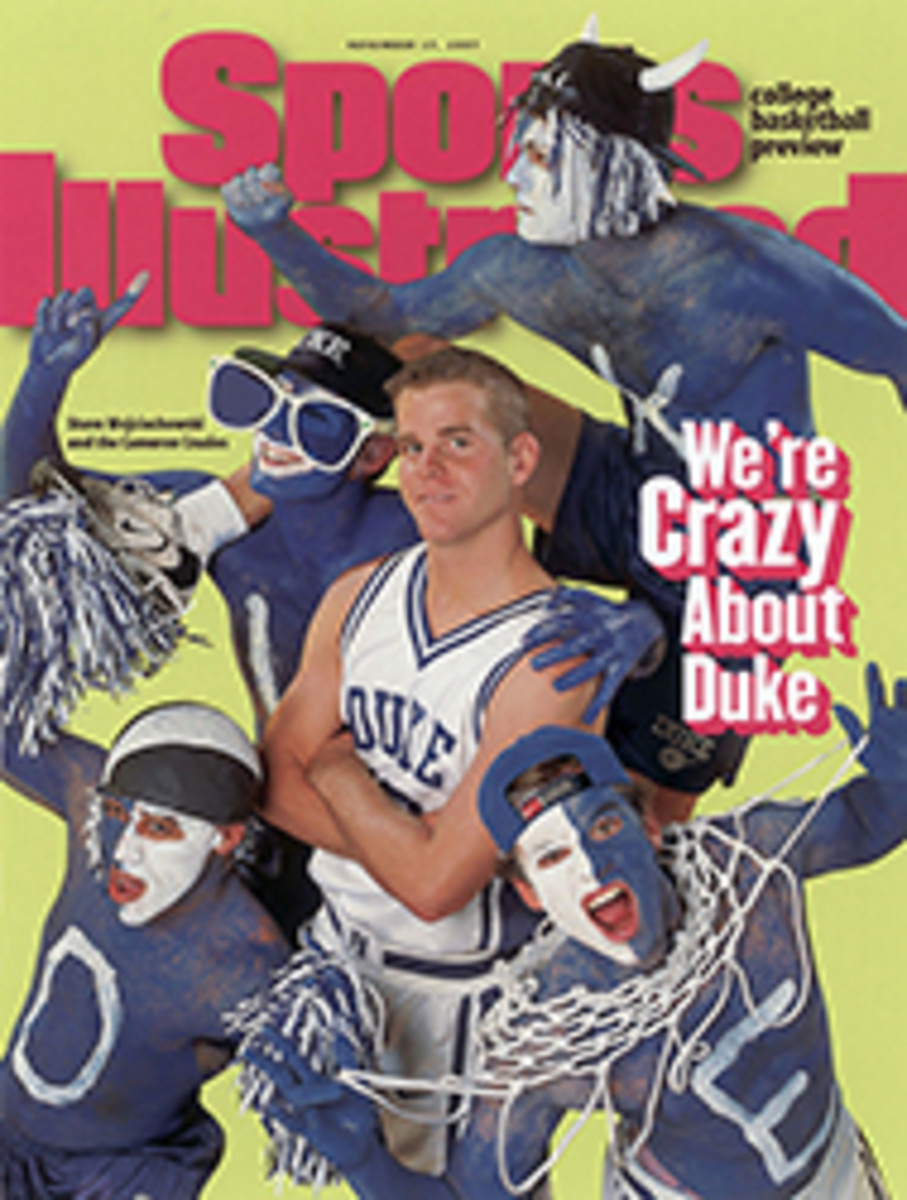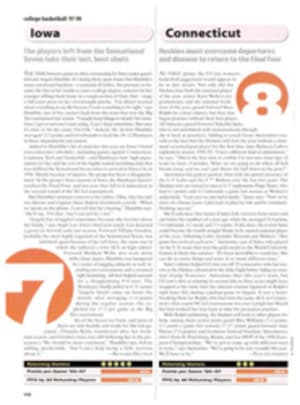
A PARTICULAR POINT OF VIEW COURTESY OF CATCHER CAM, COUCH POTATOES SEE THE PITCH AS CLEARLY AS THE BATTER
Before last summer's All-Star Game at Jacobs Field, Randy Hermes
was as nervous as any of the rookies. That night, Fox Sports
television introduced Catcher Cam, the miniature, point-of-view
camera that Hermes invented, to a national TV audience. But when
the camera began giving the game's 30 million viewers a head-on
view of Randy Johnson's 95-mph fastball hurtling toward catcher
Sandy Alomar Jr.'s mitt, Hermes was able to breathe a sigh of
relief. Not only did the Catcher Cam, which was attached to the
top of Alomar's mask, indicate the speed and trajectory of
Johnson's pitches, but it also provided TV viewers with a new
way to watch baseball.
Hermes has actually devised two Catcher Cam systems, to fit two
styles of masks. For the traditional cage mask, the type worn by
Mike Piazza of the Los Angeles Dodgers, Hermes puts a modified
Sony XC-777 camera and a transmitter on one side and a battery
pack on the other. For Alomar's hockey-goalie-style mask, Hermes
places the camera and transmitter in a small compartment on top
and the battery pack on the back. Both systems send video feed
to a receiving dish inside the stadium. From there the signal
travels by cable to the TV production truck in the stadium
parking lot.
"For the director it's another video source to integrate into
the show," says Hermes, a three-time Emmy Award winner for
technical achievement. "Usually, the director takes the minicam
feed and isolates it to its own tape machine, so it's always
available for replay."
Catcher Cam is the latest success to emerge from Hermes's
workshop at Aerial Video Systems, the Burbank, Calif., company
he founded in 1981. The 41-year-old Hermes grew up with an avid
interest in electronics, although he was undecided about a
career path until he entered San Bernardino (Calif.) Valley
College in 1974. "I could've been the Maytag repairman or the TV
fix-it man," he says, "but they had a television station at the
college, and I thought TV would be the perfect outlet for my
creative and technical skills."
Hermes studied electronics and telecommunications and worked on
technical broadcast operations at the school station. After
graduating, he took advantage of breakthroughs in wireless
technology and the miniaturization of electronic devices to
fashion point-of-view cameras for helicopters, surveillance
systems and TV shows such as American Gladiators and Battle of
the Network Stars. He remembers his first helmet cam as a "big
clunky thing" that was used during a mid-1980s motocross race.
He has since developed point-of-view cameras for such varied
events as horse races, polo matches, ESPN's Summer and Winter X
Games, and the Winter Olympics.
Before the Catcher Cam, Hermes's biggest splash was in 1991,
when players in the World League of American Football wore his
Helmet Cam on USA Network broadcasts. Not every athlete,
however, wants to wear the cameras Hermes devises. In 1994 the
goalkeepers for the U.S. Olympic hockey team were outfitted with
Goalie Cams, but at the last minute they chose not to use them.
Ditto for '94 U.S. Olympian Duncan Kennedy and his Luge Cam.
Chris McCarron, who won this year's Belmont Stakes aboard Touch
Gold, pulled the plug on his Jockey Cam moments before that race.
"It's frustrating when that happens, but we're here to cover the
sport, not to change the sport," says Hermes. "If an athlete
feels that the cam is affecting his ability or
performance--physically or psychologically--then he has the
right not to use it. The athlete always has the last say."
The cameras themselves cost between $25,000 and $30,000 to
design and build, and Hermes leases the equipment to the
networks. He also provides his technical assistance for the
telecasts. "What we're doing is pretty complicated, and
sometimes there are nuances that need to be worked out," says
Hermes.
Meanwhile, Hermes is busy perfecting the Goalie Cam for Fox
Sports' NHL broadcasts this season. "We're getting more business
because the networks are allocating more resources for these
types of cameras," says Hermes. "They compete to see who can get
the coolest shot."
David Davis is an editor for L.A. Weekly and a frequent
contributor to Sports Illustrated.
COLOR PHOTO: JOHN IACONO A tiny camera atop Alomar's mask captured the trajectory of Johnson's heat during the All-Star Game. [Sandy Alomar Jr. wearing Catcher Cam mask in game]

